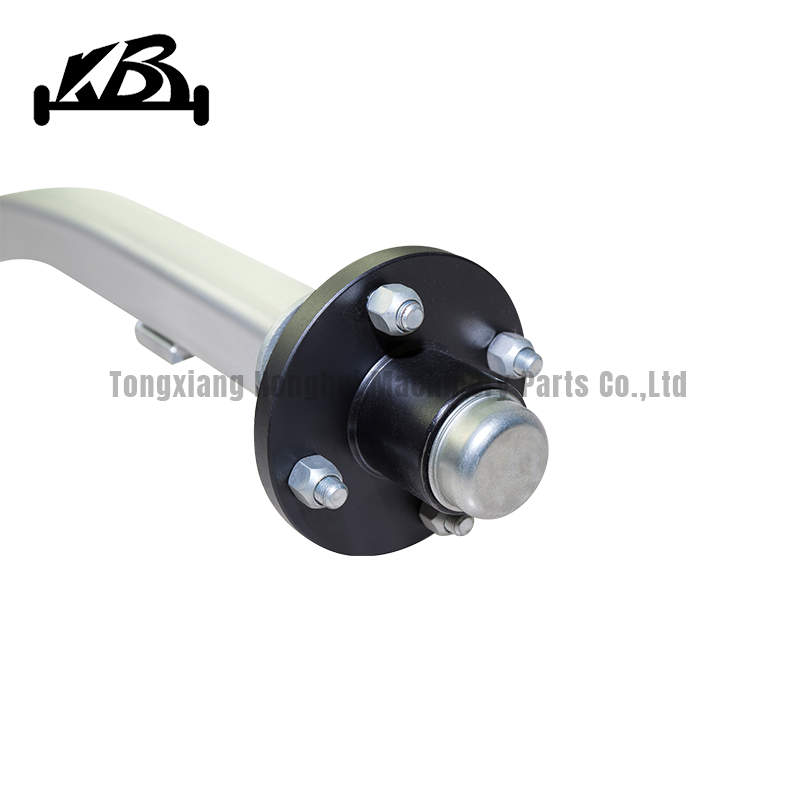When integrating braking systems with a straight axle that lacks built-in brakes, careful consideration and systematic steps are essential to ensure compatibility and optimal performance. Here’s a comprehensive guide on how to achieve this:
1. Understand Brake System Requirements
To begin, it’s crucial to identify the specific requirements of the braking system that will be integrated with the straight axle:
Brake Type Selection: Determine whether the application calls for mechanical brakes (such as drum brakes), hydraulic brakes (like disc brakes), or electronic braking systems (including regenerative braking for electric vehicles).
Performance Specifications: Define the necessary braking performance metrics, including stopping power, response time, and operational conditions such as temperature range and load capacity.
2. Evaluate Axle Compatibility
Next, assess the structural and functional characteristics of the Straight axle without brake to ensure it can accommodate the chosen braking system:
Structural Assessment: Examine the axle’s design to verify compatibility with mounting points, hubs, or interfaces required for attaching external braking components.
Load Capacity Consideration: Ensure that the axle can withstand the forces and stresses exerted during braking without compromising its structural integrity or performance.
3. Select Compatible Braking Components
Choose braking components that seamlessly integrate with the axle’s design and specifications:
Brake Assembly Compatibility: Select appropriate brake calipers, rotors or drums, pads or shoes, and accompanying hardware that are compatible with the axle’s mounting points and load-bearing capacity.
Mounting Configuration: Confirm that the selected braking components can be securely mounted to the axle without requiring modifications that could weaken its structure or compromise safety.
4. Integrate Brake Controls and Systems
Ensure smooth integration of brake controls and systems with the axle and vehicle’s overall design:
Hydraulic or Mechanical Integration: Determine the routing of brake lines, hydraulic hoses, or mechanical linkages to connect braking components to the axle effectively.
Electronic System Integration (if applicable): For electronic braking systems, ensure compatibility with vehicle electronics and power management systems. This may involve integrating sensors, controllers, and wiring harnesses.
5. Ensure Safety and Regulatory Compliance
Adhere to safety standards and regulatory requirements applicable to braking systems:
Regulatory Standards: Ensure that the integrated braking system meets or exceeds safety standards and regulations governing braking systems in your region or industry.
Testing and Validation: Conduct thorough testing and validation of the integrated braking system to verify its reliability, performance, and compliance with specified requirements.
6. Installation and Calibration
Proper installation and calibration are critical to optimizing braking system performance:
Professional Installation: Consider professional installation services, especially for complex braking systems or specialized applications.
Adjustment and Calibration: Fine-tune braking system adjustments such as brake bias and pedal feel to achieve optimal braking performance and ensure even distribution of braking force.

7. Maintenance and Monitoring
Establish a regular maintenance schedule to uphold braking system integrity and performance:
Inspection Protocols: Implement routine inspections of braking components and their attachment to the Straight axle without brake. Monitor wear patterns, fluid levels (for hydraulic systems), and any signs of degradation.
Maintenance Procedures: Adhere to manufacturer-recommended maintenance procedures for brakes and axle components to extend longevity and maintain optimal performance.
8. Documentation and Record-Keeping
Maintain comprehensive documentation of installation, maintenance, and modifications:
Documentation: Keep detailed records of all activities related to the braking system, including installation, maintenance, repairs, and any modifications made. These records are invaluable for troubleshooting, warranty claims, and compliance audits.



 中文简体
中文简体













